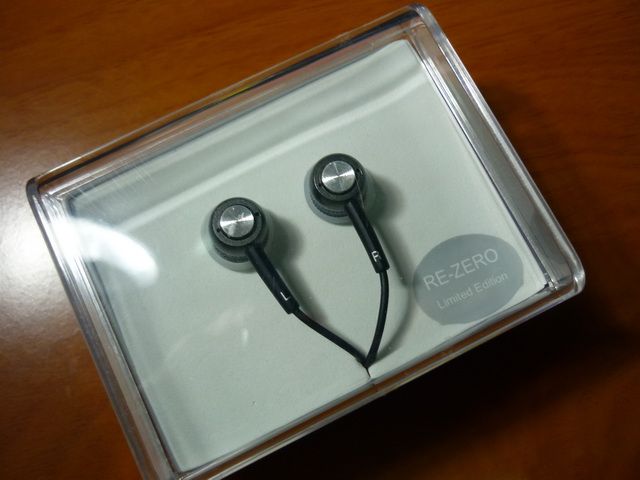
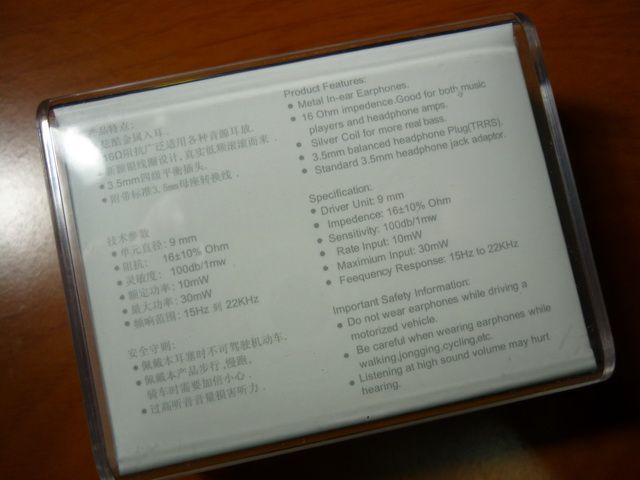
Driver Unit: 9 mm Dynamic with silver coil
Impedance: 16 +/- 10% Ohm
Rate Input: 10 mW
Frequency Response: 15 Hz to 22 KHz
Connector: 3.5mm TRRS plug for balanced output
Two standard 3.5mm TRS headphone jack adapters
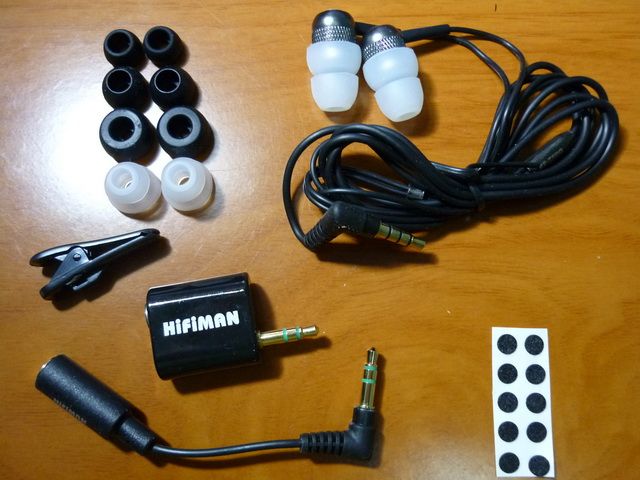
Packaging, Accessories, and Build Quality
Like the newer generation of the RE series, the RE-ZERO comes in a transparent hard plastic case. Already on the earpiece itself are the big bi-flanges. Inside, you will find three pair of different sized single flange silicone eartips, one pair of UE style bi-flanges, 5 pair of replacement filters, and a shirt clip. There also two different style of TRRS to TRS plug adapter which makes sure the TRRS terminated RE-ZERO is compatible to the common TRS jack on DAP (*more on this on the next section). The cable used is PPE based, similar to that of the new generation RE0 and RE252. So far from what I can tell on RE252, the PPE cable is indeed better than the old generation RE series cable, mainly less memory effect (= less tangle), less microphonics and generally more durable. Like RE252, Y-splitter and the cable guide are made out of metal with gunmetal color and lasered marking. The cable guide is however a little tight to move around, so be care and give it a little more patience.
On first look the RE-ZERO housing is similar to RE0. But upon close inspection, the new housing is slightly bigger on the back with a grey metallic finish instead of RE0’s black finish. Other than that, the build quality seems to be fairly consistent to the new generation of RE0, which is more than decent due to the rather simple construction and material of choice.
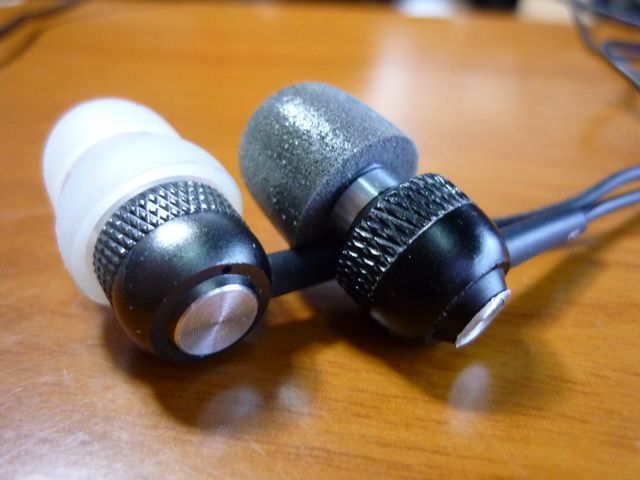
Due to the similarity in construction and design, isolation and comfort are pretty much identical between RE0 and RE-ZERO. On big bi-flange, isolation is probably around -23~26dB, which is on par with most of the decent IEM and I consider it to be above average. Comfort wise, it is not too far off from a small IEM, such as CX300 or EP630. As mentioned before, the PPE cable is less microphonics than the older generation RE series, but it is not immune to it - just not bad enough to cause an issue and can easily get used to. Using the included shirt clip or wearing the IEM over-the-ear should easily remedy the problem for those of you who can’t live with any microphonics.
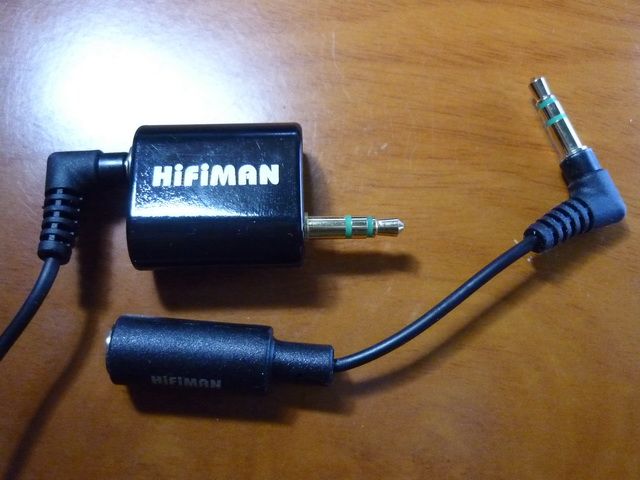
But before we go into the SQ of the RE-ZERO, let’s discuss the unusual TRRS plug.
The TRRS plug on the RE-ZERO is intended for balanced audio. As oppose to typical 3 channels plug (TRS = Tip: Left channel; Ring: Right channel; Sleeve: Ground channel), the TRRS is composed of Left+ (T), Right+ (R), Left- (R), Right- (S). So what is ‘balanced audio’ anyway? Here is a quote from HeadRoom:
What is Balanced Headphone Drive?
Balanced Headphone Drive is a scheme that uses two wires to deliver equal and opposite audio signals to each side of the driver coil. When properly done a significant increase of audio performance is heard due to the doubling of slew rate and power; the reduction of some distortion components; and virtual elimination of crosstalk at the headphones due to the common ground.
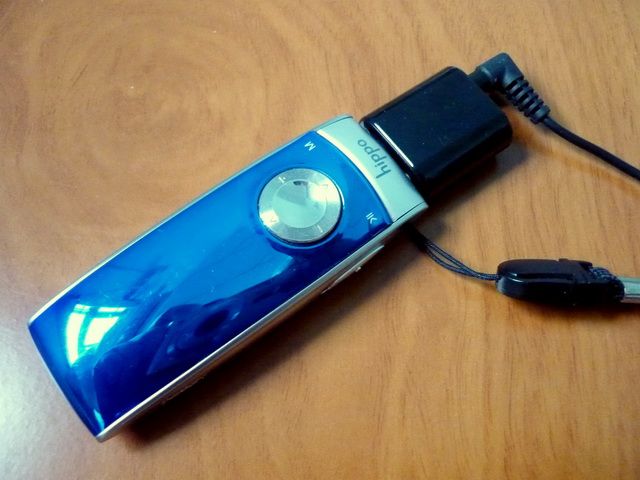

As far as this review goes, testing for balanced input is impossible since I don’t have anything that output balanced audio signal at the moment. Due to the fact that the TRRS plug is designed mainly for balanced audio, connecting it to a normal TRS jack on DAP or amp means most likely the right side of the IEM won’t make a sound (though unlikely, it could also be the left side depends on the jack). That is why two TRRS to TRS adapter are included. They performs the same way so which to use depends on mostly on personal preference. I do prefer the hard adapter most of the time and reserve the cable adapter only to tight corner (like on an amp). As far as the usability of the adapter, I don’t find them to be too awkward. For any person who is willing to carry an amp (even a small one) and a LOD for the name of SQ, an extra adapter really doesn’t add much more to the mix, especially since it is fairly light. If you have no interest in using adapter, you can reterminate the cable yourself by soldering both the Left- and Right- wires to a new TRS plug’s ground channel, but that will void the warranty for sure.
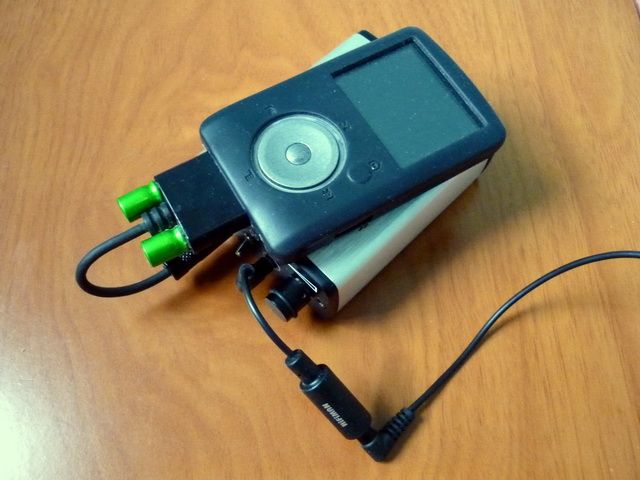
Sound Quality
As usual, the IEM has been burnt-in for at least 50 hours before the review. Since this is the newest generation of the RE series (at least till RE262 hits the market), the IEM chosen for comparison are the RE0 and the current flagship, the RE252.
For treble, RE0 is still the king of the hill for its extension and micro detail. RE252 also done a very good job on treble, but just a little too much sparkle in the mid-upper treble that cover up some of the finest detail – though it is still better than most IEM in presenting treble detail. In extension, RE-ZERO can match up with RE252 (RE0 has the best extension of any IEM I have heard, so no competition there), but roll off just a little earlier around 14kHz (as compared to the 15kHz of RE252) and has a smoother, less sparkly FR curve. So RE-ZERO isn’t quite as analytical as RE252 (and less so compared to RE0), but the performance is still way above average and certainly can out do the majority of IEM in the market.
Mid is where RE-ZERO’s strength lies. RE0’s mid is relatively recessed in its own sound, but still retains very good texture because of how much micro detail there is. RE252 mid can easily match up and surpass RE0. As I have said in my RE252 review, the mid is very well placed. It is neither neutral nor upfront, but gives an impression of being the dominance of its sound signature yet doesn’t over power the treble or bass (and a reason why RE252 has the most balanced sound signature of all the RE series). RE-ZERO’s mid is more upfront compared to the other two, especially on the upper mid -lower treble region. This gives RE-ZERO a sweeter, juicier vocal and a brighter sound, but not sibilant or too sweet, and thus it is probably the best for vocal and casual listening among the three.
I think it goes without saying that RE0 has the smallest bass among the three even when amped. The real competition is between RE252 and RE-ZERO. While neither of them is qualified for big bass, what they do have is quality bass – decent impact, tight and quick, goes low but lacks a good body that will make a basshead smiles. However, quantitative wise RE-ZERO is ahead since it is warmer and fuller in the upper bass region and gives support to the more forwarded mid.
Like RE0 and RE252, Soundstage is about average on the RE-ZERO. The warmer, more mid centric sound signature of RE-ZERO isn’t particularly tuned to have a wide soundstage, though it isn’t a weakness either since too wide of a soundstage generally will subtract the intimacy of vocal.

Verdict
With a sound signature that has by far the best equilibrium between musicality and neutrality in the RE series, it is hard not to like RE-ZERO. If RE252 is for the love of balance and a near flawless blend while RE0 is for the love of micro detail and a neutral presentation, then RE-ZERO is perhaps a celebration of the mid. While it is nowhere as sweet or as lush as a true mid centric IEM such as the e-Q7 or SE530, the light touch of warm and focus on the mid colors is just right for an easier going, livelier listening experience that is missing from the more neutral RE0. For its outstanding value at US$99, I will recommend RE-ZERO with a Sonic Diamond Award.






